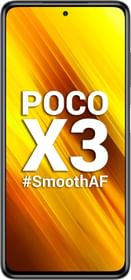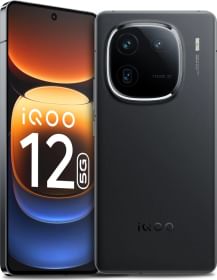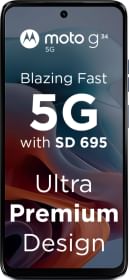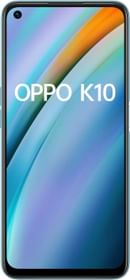Joining the race for the production of the best flagship smartphone this year is the Taiwanese smartphone maker HTC, with its recent outing – the U11 (first impression) – that is has conveniently dubbed the ‘Squeezy phone’. But, given the company’s history regarding its flagship phones since the last few years, the U11 has a lot of responsibility on its shoulders to come out on top.
Also Read: 5 Reasons Why Samsung S8 is better than Google Pixel and iPhone 7
In the Samsung Galaxy S8, it faces a more than formidable opponent it needs to topple in order to get HTC over the rough patch the company has found itself in. Has the U11 got enough mean in its machine, or will it fizzle away against Samsung’s Galaxy S8?
We find out.

But first, a look at the specs card.
HTC U11 vs Samsung Galaxy S8 Specs Comparison
| Model | Samsung Galaxy S8 | HTC U11 |
| Display | 5.8-inch QHD+ (2960×1440 pixels), AMOLED, Gorilla Glass 5, HDR 10 | 5.5-Inch, SLCD 5 Display, QHD resolution, Gorilla Glass 5 |
| Processor | Octa-Core Qualcomm Snapdragon 835 with Adreno 540 GPU / Octa-Core Samsung Exynos 9 Series 8895 processor (India) | Octa-Core Qualcomm Snapdragon 835 with Adreno 540 GPU |
| RAM | 4GB/6GB | 6GB |
| Internal Storage | 64GB/ 128GB | 128GB |
| Software | Android Nougat based Experience UI | Android Nougat based Sense Edge UI |
| Primary Camera | 12MP Dual Pixel rear camera with LED Flash, f/1.7 aperture | 12MP, Ultrapixel, f/1.7 aperture, PDAF, LED flash |
| Secondary Camera | 8MP, F/1.7 aperture, AF | 16MP with f/2.0 aperture |
| Dimensions and Weight | 148.9 x 68.1 x 8.0mm and 152 grams | 153.9 x 75.9 x 7.9mm and 169 grams |
| Battery | 3,000 mAh, fast charging | 3000 mAh with fast charging |
| Others | 4G VoLTE, WiFi, Bluetooth, GPS, microUSB, 3.5mm audio jack, Iris scanner, Fingerprint sensor | 4G VoLTE, dual band WiFi, NFC, Bluetooth, U Sonic audio, Fingerprint sensor (home button), USB Type-C |
| Starting Price | Rs. 57,990 | Rs. 51,990 |
Moving on to the insides, now:
Design and Display
Given HTC’s affinity towards good-looking and sturdy smartphones, the U11 makes a conscious effort to be as easy as on the eye as a phone can be, and the metal glass combo works fine for the phone’s aesthetics. Another handsome addition is the ‘Liquid Surface’ design on the back (taken off from what the U Ultra and the U Ultra also sported).

Samsung’s latest premium offering does not lag behind in the design race too, courtesy the edge screen technology and the reduced bezels. The curvier-yet-thin design bodes well with us and this is arguably one of the better designed phones dished out this year. And yet, we beg to differ over the placement of the fingerprint sensor.
For the U11’s display, we have a 5.5-inch display with quadHD resolution that lends uniformity to the icons and texts, while the SuperLCD 5 panel, too, is up to the mark when it comes to colors, contrasts and deep blacks, although the screen’s not as bright as we would have desired (then again, not a big deal).

With the introduction of the new 18.5:9 aspect ratio, Samsung has managed to fit in a bigger display without increasing the size of the phone, making it stretch to 5.8-inches. The AMOLED panel with the quadHD display is quite vivid, the quality of which has been aggravated further by the Infinity Display that the curves also accentuate.
Simply put, the Galaxy S8 is better looking of the two. It’s also more compact.
Software
Software has always been HTC’s forte, and the U11, which comes with the very latest Android 7.1 Nougat-based Sense UI, which is largely bloatware-free and even the ones present (BlinkFeed, Edge Sense, and Amazon Alexa) come in pretty handy.

Also Read: What’s right and what’s wrong with Samsung Galaxy S8 and S8+
And then there’s the Edge Sense (Squeeze) technology, that was the focal point of the phone’s marketing, and enables the users to open different apps just by squeezing it. The app is customized according to the user’s needs and preferences (allocating different intensity of squeezes to open different apps). All in all, we don’t mind it, and it is a great way to save time.
The S8’s ‘Experience’ UI (that has been placed on top of Android 7.0 Nougat) is neat, easy on the eye and also functional. It comes with Google Assistant and the company’s indigenous Bixby AI assistant (although still at a development stage, more or less).

Bixby has also been integrated with the camera app, wherein it employs computer vision tech to run contextual algorithms to provide right answers. Although to use it in its entirety, we’d still have to wait for the OTA update.
The software on U11 is more close to stock Android and is lighter than the Galaxy S8. The Xperience UI has several intuitive additions but it’s also heavier.
Performance
Coming to the performance, the U11 reports come in top of the line, and give way to a stutter-free experience with the Snapdragon 835 chipset dictating the proceedings here. High-end gaming is also convenient, there are no lags, and the devices looks adept at handling pretty much everything.

True to its flagship status, the S8 comes loaded with pretty advanced features. In India, a 2.3GHz octa-core Exynos 8895 chipset replaces the Snapdragon 835 processor (prevalent in the US), but gives out as good a performance as the latter.
The S8 is also a more than efficient multi-tasker, traversing easily through strenuous games, applications, and browsers. Heating did creep up here and there, but no major problems here.

If we were to opine, the Indian audience would find the U11 to be noticeably faster, as compared to the Galaxy S8.
Camera
Setting the record straight, the U11 has been accorded the highest score ever (90) by DxOMark for a smartphone, edging out the Galaxy S8 (88) by a couple of points.
The phone does possess the arsenal to live up to this (with the company vehemently promoting the fact), and snaps vibrant, popping images that are well-detailed and have an almost natural color reproduction. Low light performance too, is up to the mark, producing sharp snaps that are largely noise-resistant too.

The S8 does not fare too bad either, and although there is little to no change in the specs department from the S7 Edge, there is certainly an ounce of improvement in the quality of the photographs.
Noise-handling sees an improvement and so does color reproduction. The triple-frame capture is a welcome addition, and does a world of good in low-lighting conditions. Up front, there is marked improvement, with the 8MP sensor having a fast and efficient autofocus (a rarity in selfie cameras),. Also, several Snapchat and Instagram-like filters are available for you to toy with.
Also Read: Phone Comparison – Sony Xperia XZ Premium vs HTC U11
Who should buy the HTC U11?
All those who want a smartphone that is extremely snappy and those who prioritize out of the world audio experience (even without the 3.5mm audio jack). Also, those who want to try out the ‘Squeezy’ feature and love fingerprint sensor on the front.
Who should buy the Samsung Galaxy S8?
S8 looks pure stunning and it’s also very compact. The Infinity display and its Autofocus selfie camera are miles ahead of the competition.

































